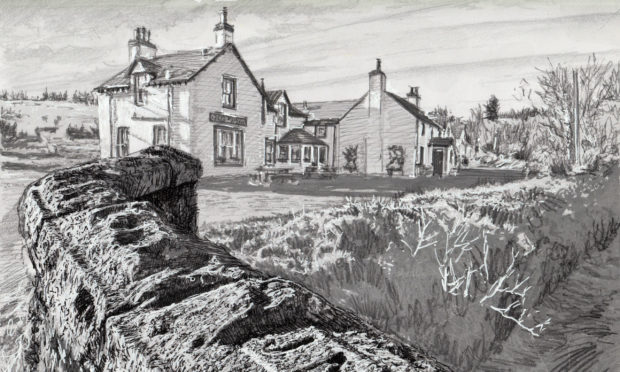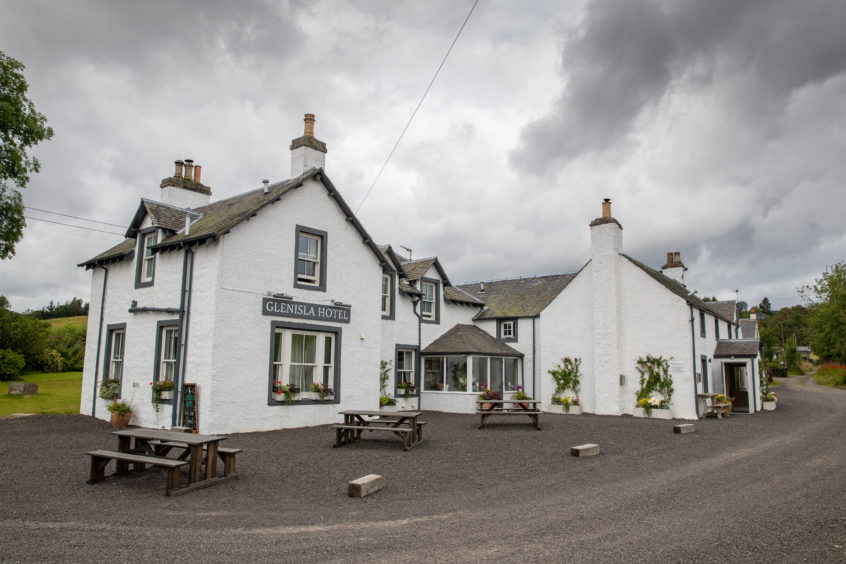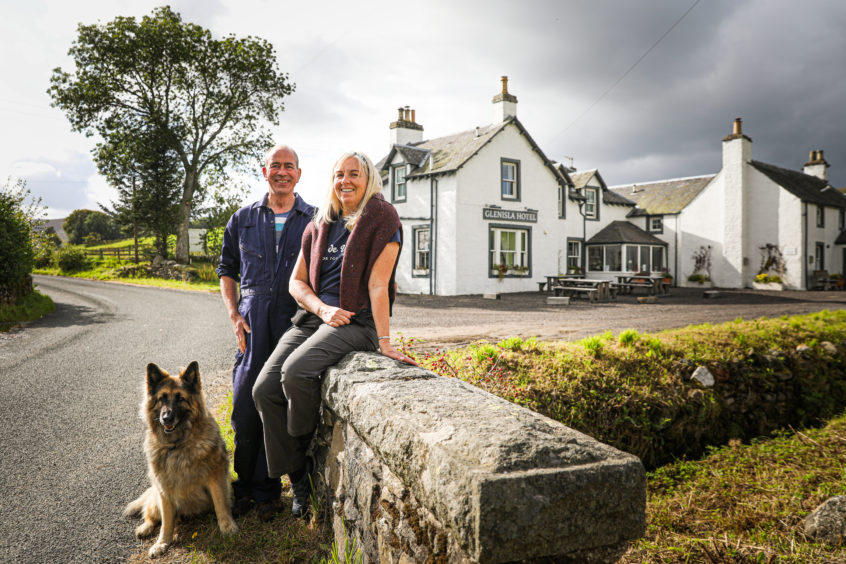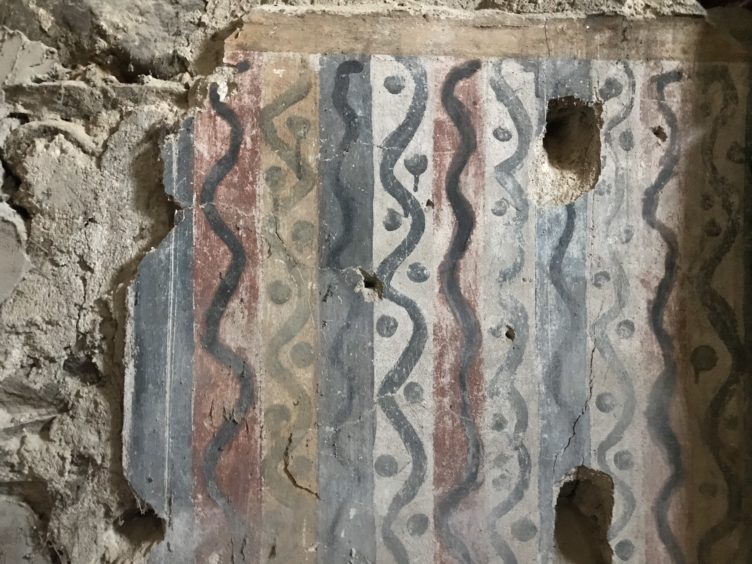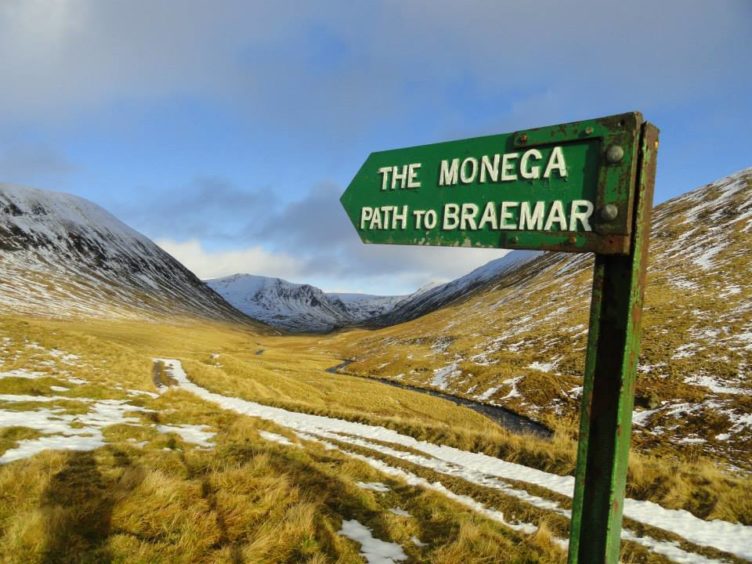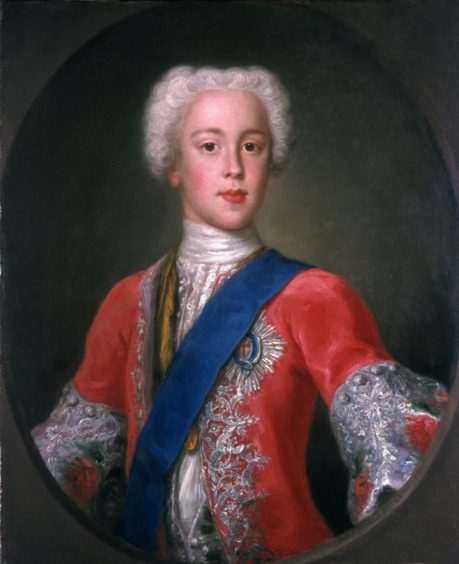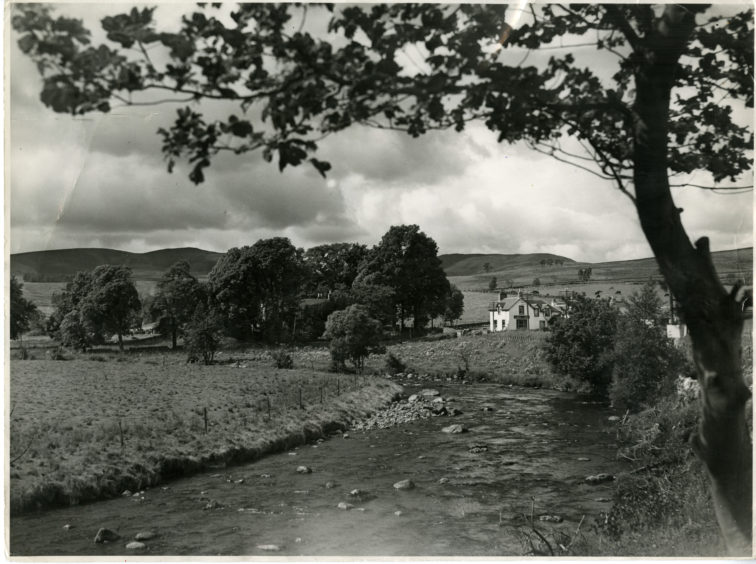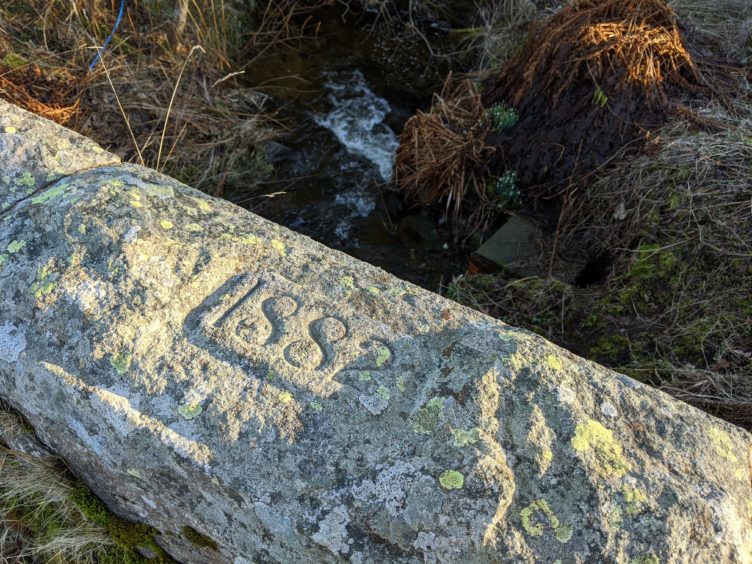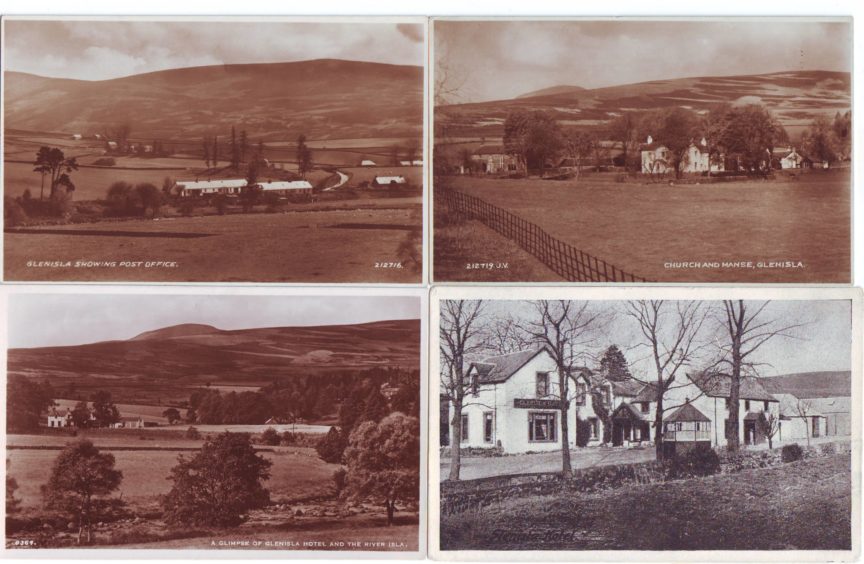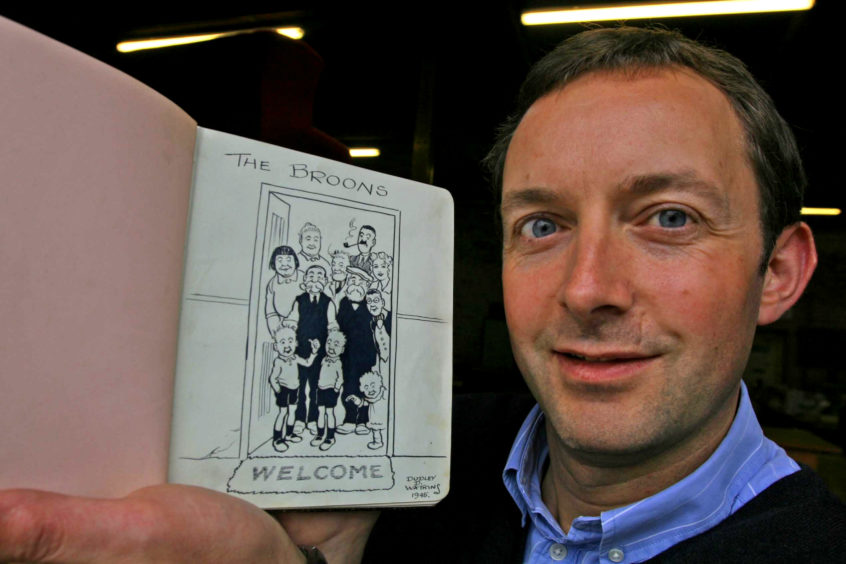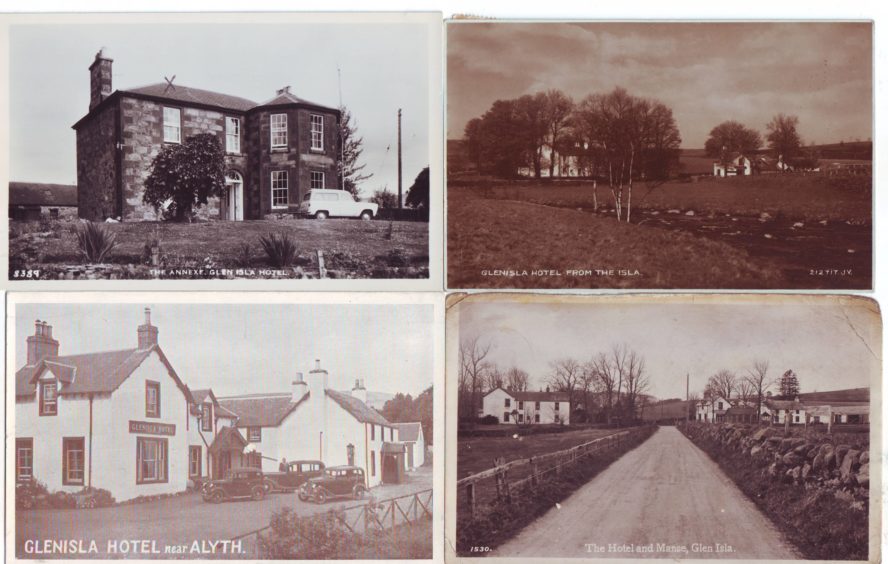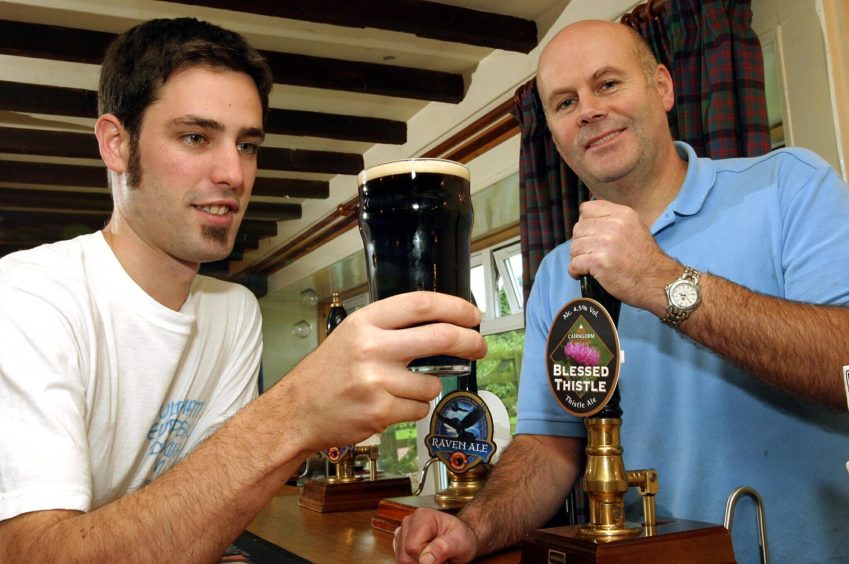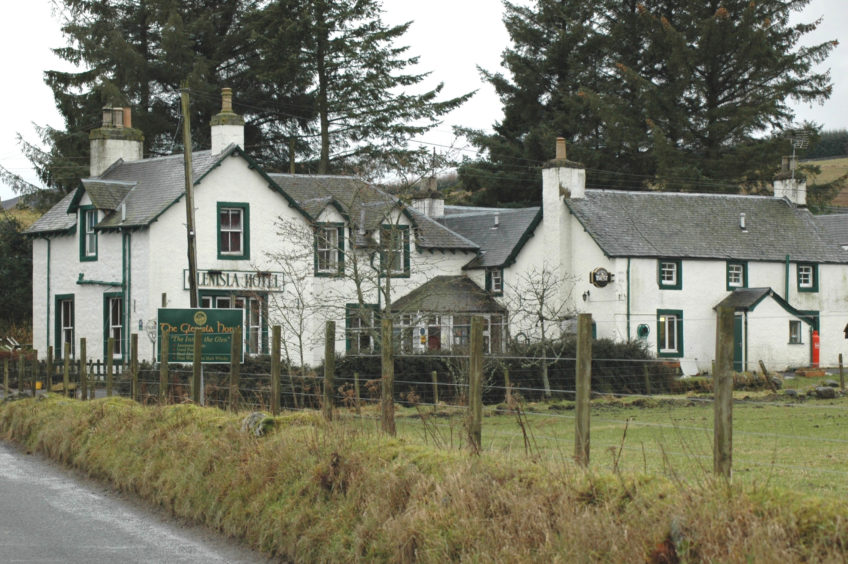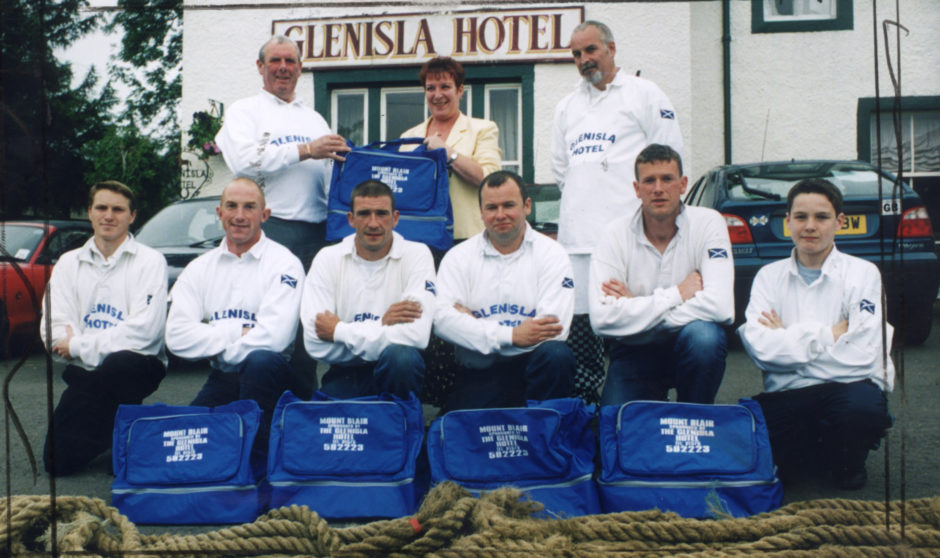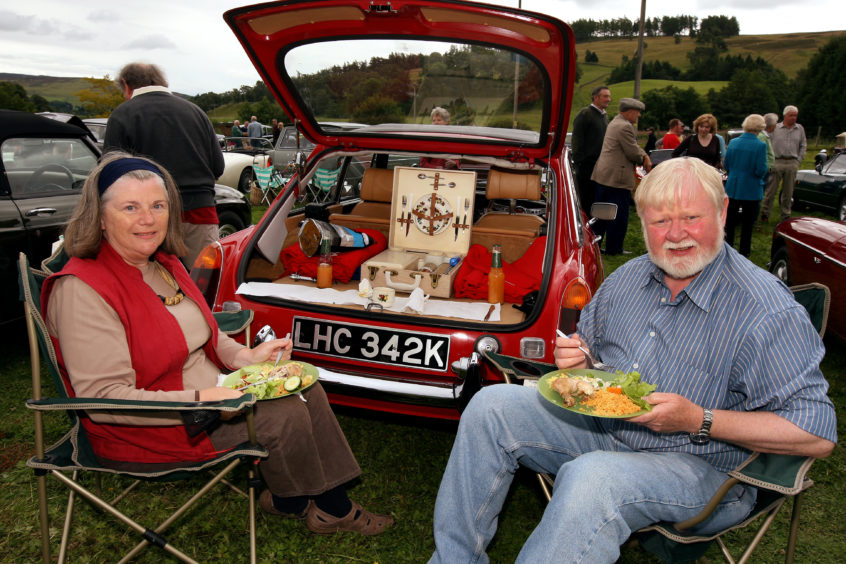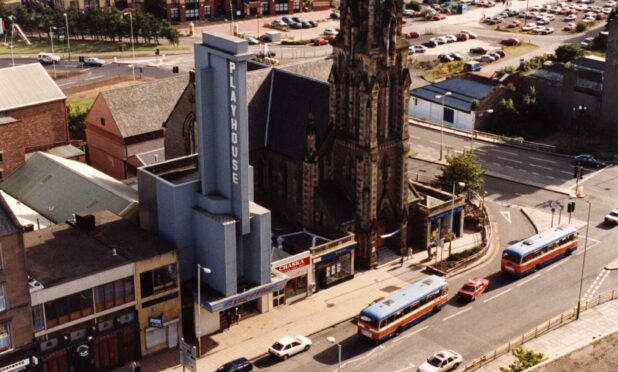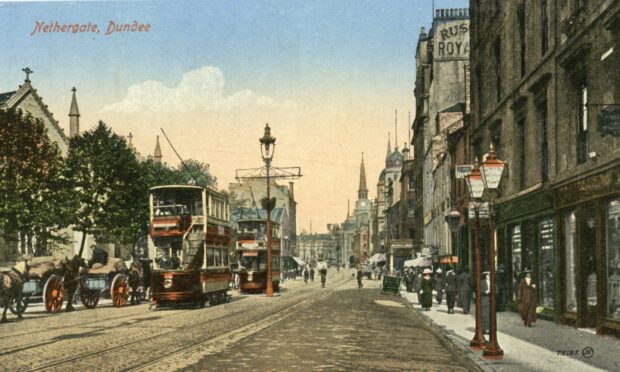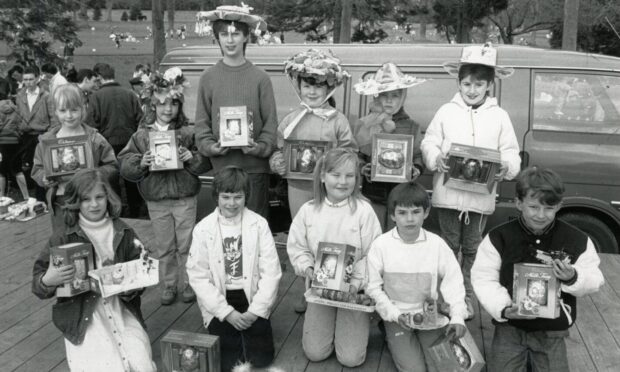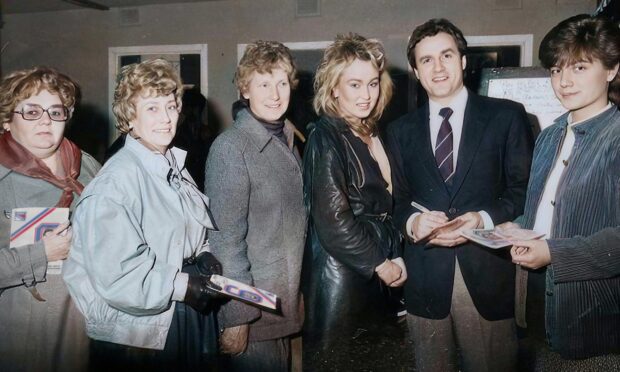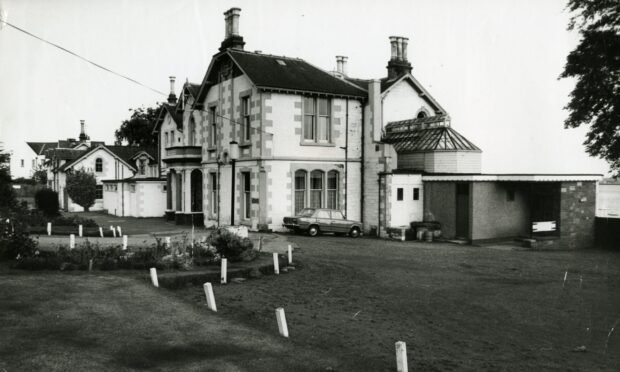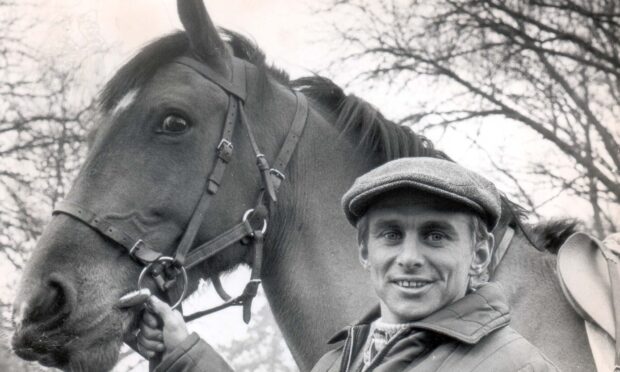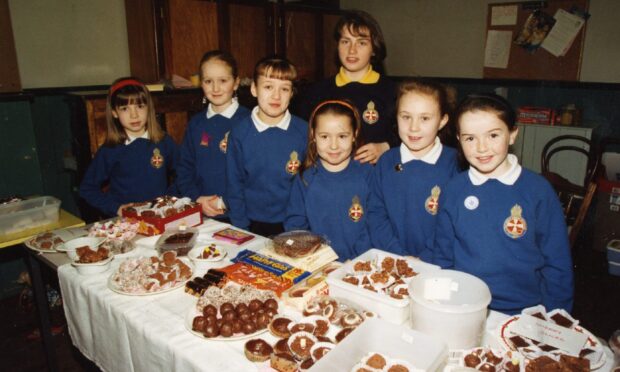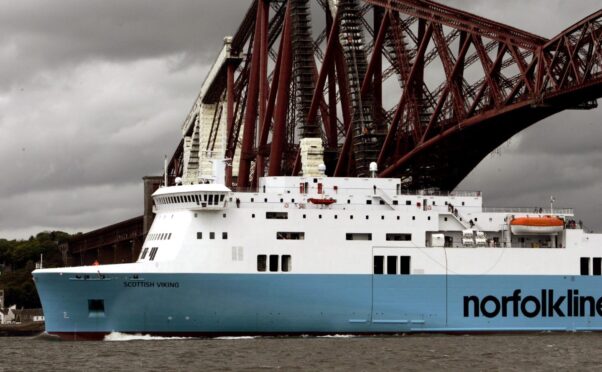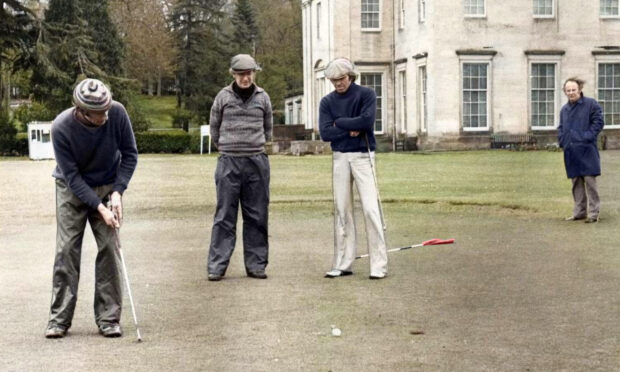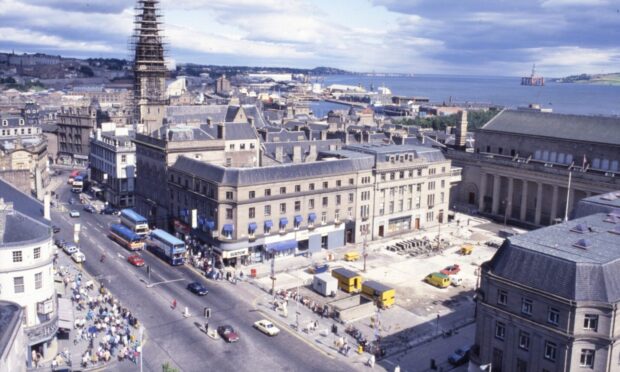Glenisla Hotel has been a coaching inn since the 1700s and boasts links to the 1745 Jacobite rebellion. Locals petitioning against plans to turn it into homes were delighted when the new owners revealed their hopes to restore the historic building as the beating heart of the community. Gayle Ritchie looks back at the hotel’s 300-year history.
Nestled deep in the heart of Glenisla, it’s been offering rest and respite to weary travellers for three centuries.
Enchanting tales of smugglers, illicit whisky stills, bandits, cattle raiders, lost treasure and witches surround Glenisla Hotel and it’s been a focal point for the community since the early 1700s.
The stunning, whitewashed coaching inn, 10 miles north of Alyth, has experienced its fair share of ups and downs over the decades but its sudden closure in late January – the second such closure in recent years – sparked fears for its future.
Plans to transform the historic hotel into housing angered locals, spurring them on to petition against such a fate.
Objectors feared the loss of the hotel – which has links to the 1745 Jacobite rebellion – would “rip the heart” out of the community.
However, fear turned to delight when the new owners, Blairgowrie-based Bryan and Isobel Webster, revealed they would be relaunching the premises initially as an Airbnb.
They then intend developing a plan for a community network, which would involve other small businesses in running ventures such as a cafe, shop, pub and restaurant within it.
“When the hotel came up for sale we suspected what its fate might be and wanted to do something,” said Bryan.
“We’re looking at it as a project within the community, and want to do this because we love the hotel, and we love the glen.
“We want to get the local community to say, ‘here’s how we want it to run’.”
The couple hope rooms will be available for visitors next month, but warn it won’t be a quick case of re-opening it as a fully operational hotel.
“We’re going to keep the money coming in through Airbnb, and effectively keep the building alive until someone comes along and says they’d like to run a pub, cafe, shop or whatever,” said Bryan.
“While our ultimate goal is to get it back to a full hotel, it will take time.
“It’s about grabbing this chance to create a community hub. We want the hotel to survive and thrive.”
Bryan and Isobel know Glenisla well, having grown up in Dundee and spent their youth enjoying the area.
“My father had a caravan in Blacklunans so we spent all our weekends in the glens and hotels,” says Bryan.
“We watched with great sadness as one by one, all the other hotels in the area closed down – Glenisla is the last remaining.”
Isobel added: “The fact that more than 800 people signed a petition to save the hotel from being turned into homes shows there are a lot of passionate people out there who care. We want these people to get on board and secure the hotel’s future.”
Witch warning
Kevin Greig of the Glenisla History Society has spent years researching the hotel and glen’s past.
“The coaching inn in Kirkton of Glenisla is considered one of the oldest in Angus,” he said.
“Its earliest record is in the form of ‘wave and dot’ painted plasterwork in the oldest portion of the building.
“It may well originate from the 16th or 17th century. This paintwork is augmented with the depiction of a rowan tree, considered to be an artistic warning to witches.”
The paintings were discovered by the hotel’s owners, Michael and Kirsten Bartholomew, during extensive renovations in the late 1980s.
In Scotland, the rowan has a long history in folklore as being a tree which protects against witchcraft and enchantment.
The Bartholomews, finding the design “beautiful and original”, preserved a section of it behind a glass panel so guests could enjoy it.
Drovers’ inn
The hotel also acted as a drovers’ inn in the 18th century, servicing the highest hill path in Scotland – the Monega Pass, reaching just over 1,000m near the summit of Glas Maol.
This ancient right of way was once much used by cattle drovers and reivers alike.
“Cattle passed from Deeside and further north to markets in Forfar,” said Kevin.
“The Monega Pass stretched from the Sean Spittal Bridge in Glen Clunie to the Kirkton of Glenisla Hotel.”
Jacobite rebellion
By 1745, John Reoch, then listed as the innkeeper at the hotel, was a sergeant in Bonnie Prince Charlie’s rebel army.
He deserted along with several other men during the retreat north from Stirling when Ogilvy’s regiment was dismissed for two days on its way to Culloden on February 4 1746. Reoch was afterwards noted as lurking close to home.
William Shaw, who lives in Issaquah, Washington, in the US, has family links to Glenisla from 1710 and to the Jacobite rising.
He said his ancestors, Alexander and Alastair Shaw of Auchavan, and William Shaw of Auchenleish and Little Forter, were “taken away” by the English after the rebellion.
“Reoch was taken along with my ancestors after Culloden and the collapse of the rising,” he said. “To this day, there are still Shaw families in Glenisla.”
Illicit stills
In the 1820s it was whisky rather than cattle taking to the heights of the Monega Pass with considerable quantities from upper Glenisla augmenting this traffic.
“The gaugers coming up the glen to stop their tax-free gains had travelled far and would inevitably rest themselves and their horses at the hotel,” explained Kevin.
“This fact did not go unnoticed from the manse window overlooking the hotel and no sooner had the gaugers entered to refresh themselves than Glenisla’s very own Reverend Andrew Burns would casually walk his horse from the stables as if putting it to pasture on the glebe.”
This was a ruse and in fact, the minister was a big supporter of the smugglers.
Riding off into the glen, he would wave his hat at every house and bothy and use biblical language to warn people to hide their whisky.
“The Philistines be upon thee, Samson!” he would cry.
Kevin said: “He would race up the road to where the illicit smugglers were busy in the preparation of grain or distilling in their whisky bothies and would holler at the top of his voice from horseback as he passed.
“At this pre-arranged signal, operations would be smothered and stashed in the peat.
“The minister sported a low-capped, wide-brimmed hat and was notorious for his wit and character.
“I imagine both he and the hotel profited from the industry in the glen.”
An amusing article by Mr G Ure from 1831 demonstrates the conviviality of inn and kirk when he notes that the population arrived early enough on the Sabbath to have time for a dram, the church bell marking a hurried traverse of the road.
“When in Glenisla in 1831, many of the last century customs still continued,” he wrote.
“A fine hospitable race they were. They travelled a long distance to the kirk. They came before the bell rang and went to the ‘public’ at the Kirkton – the men to have a dram of whisky and the women to have a taste of some cordial or small beer. When the bell ceased they all hurried to the kirk.”
The year 1843 saw the great disruption of the Church of Scotland which tore Glenisla’s congregation in half.
John Crombie was innkeeper and donated his barn and loft to the new Free Church congregation.
The Free Church later built its own church and manse and this barn and loft are now in the Glenisla Hotel restaurant area.
Booming business
Trade at the inn had increased to such an extent that in 1878, the innkeeper John Grant vastly extended the building to become the hotel we recognise today, servicing a massive increase in visitors to the countryside and shooting estates.
“By 1881 this same increase in traffic saw the County Road Board sanction the construction of a new bridge over the Kirkton Burn at the Glenisla Hotel,” said Kevin.
“The following year the contract was given to local masons John Torbat of Auchenleish and William Robertson of Burnside of Forter.
“The trustees chose an Aberdeen grey granite to give a ‘lightsome and showy’ appearance and in August 1882 the keystone was driven in by 18-year-old Jessie Grant, daughter of John, the Crathie-born Aberdeenshire innkeeper of the Glenisla Hotel.”
20th century
George and Elizabeth Ferrier moved into Glenisla Hotel with their family, Maria, Grace, Donald and Heather, in November 1939.
They weren’t hugely familiar with the Glenisla area initially and when two farming lads came in on a wintry night to order whisky and beer, George asked where they had come from.
They answered “Pitlochry”. And George replied: “What a distance on a night like this – hae these on the house.”
The lads didn’t let on that Pitlochry was the name of a farm just over the hill, but this gesture put George in good standing with the locals.
Taking up the story, Glenisla local Lynda Spencer said: “George died a few years later but Elizabeth, with the help of her family, carried on running the hotel and farm.
“In 1955, Jack Gunn came to the glen with a string of Highland ponies. They’d been brought to Alyth by train and volunteers rode them to Glenisla.
“Soon after, pony trekking was established. This helped boost trade for the hotel and Knockshannoch youth hostel.
“In 1957, Donald bought the ponies. He then successfully ran the trekking in conjunction with the hotel for the next 21 years when he retired and sold the ponies to his son, Stewart, in 1984, who carried on the adventures for another 12 years.
“Eventually the popularity and affordability of foreign holidays put paid to many such businesses.
“But Glenisla was always a popular destination for citizens of Dundee, many of whom still remember, with great affection, pony trekking here in their school holidays.”
But ‘n’ Ben
Comic strip artist Dudley D Watkins – he drew Beano, Oor Wullie and Dandy cartoons – used to holiday in Glenisla and local legend has it that the glen’s riverside cottages were the inspiration for the But’n’Ben which featured every summer in The Broons.
Treasures of the glen
A kettle full of silver is said to be hidden within sight of the hotel, on the hillside of Lindalla to the north.
The sun is said to glint on the kettle in the early morning but the treasure is no prize as the reward for the finder is reputed to be death.
“The history of the hotel is bound up with the history of Scotland, especially with the church in the glen – the old manse and a few of the houses in the vicinity make up the hamlet of the Kirkton of Glenisla after which the hotel is named,” said Kevin.
“It is still the heart of the vibrant community of Glenisla and will yet provide tales for the future.”
Heart of the community
Like many community members, Cliff Schooling has missed the vibrant hub that was the Glenisla Hotel and cannot wait for it to re-open.
He said he has it on “good authority” that the hotel’s old bar will be reinstated “more or less”.
“The removal of the spectre of us losing our pub, has I think been greeted with a great community sigh of relief,” he said.
“It is very much at the heart of the glen and the number of objections raised to the proposed change of use not just from locals, but far and wide, is testament to this. It’s great news.
“Unfortunately our pub has been missing for some time and the previous owners’ modernisation destroyed the atmosphere of the place.
“The old bar was a great bar – very atmospheric and welcoming – and I’ve spent many happy evenings in there.”
Cliff laments that recent years have seen the glen suffer the loss of the Kirkside Hotel (also in Glenisla), the shop, school and post office with the local council “washing their hands” of the play area which the community has now taken in hand.
“The glen has a very strong community spirit and the continuing flourishing of the hall is testament to that spirit,” he said.
“The council seem to care little about our wee community but it thrives despite the lack of concern.”
Like Cliff, Lynda Spencer has missed the hotel and is excited about its future.
“It’s played such an important role in Glenisla for centuries,” she said.
“We’re delighted the hotel will remain as such and not become houses. We’re even more delighted that the new owners intend to reinstate the old bar so that the pub will once more be a welcoming, cosy place to go.”
US citizen William Shaw was also among the campaigners petitioning against plans to turn the hotel into homes.
“It’s a true gem, and Glenisla would be a poorer place with no hotel at its heart,” he said.
“It’s been a place for family and friends, a place for weddings, funerals, and a wee blether at the end of the day. It’s also a touch point for tourists outwith the glens.”
Mr Shaw first set foot in Glenisla in 1979, and has returned many times.
“My tourism orbit has always circled around the hotel, both as a restaurant, community hub and a great place to meet new and old friends.
“My hope is that it will continue to be a beacon for Highland Hospitality for people from near and far who come to the glen.
“It’s a true gem, and Glenisla would be a poorer place with no hotel at its heart.”
“But more importantly, as it has for almost 300 years, that it will remain a vibrant community hub and gathering place for the Glenshee and Glenisla community to connect and share in each others’ lives and stories while building a stronger and closer community.”
Timeline
London-based developer Bruce Swan bought Glenisla Hotel in 2014 and was a silent partner in the business which was run by a local couple before the breakdown of the relationship in the summer of 2017.
That was followed by a year-long closure for £750,000 renovations since the owner felt there was mileage in turning the Scottish country inn into a “five-star boutique hotel”.
This included increasing the capacity of the premises from six to 10 bedrooms.
In January this year, the hotel shut its doors without warning for the second time in recent years.
It went on the market citing a lack of customers as the reason and after Mr Swan said the impact of Covid-19 had signalled the end for the “unsustainable” business.
Many community members felt the redesign of the hotel had changed the nature of the place, making it “logistically unworkable”.
“The bar was situated so far from the restaurant that the small staff were unable to cover both places efficiently, with the result that customers in the pub might wait 20 minutes to be served and many didn’t wait, locals and tourists alike,” said Lynda.
“The changes also did away with the public areas where local groups could meet.
“In the past the hotel hosted meetings for the classic car club, the bridge club, the Highland and Friendly Society committee and the play park committee.
“People would repair to the pub after playing badminton, after drama rehearsals and after tug o’ war practice or competitions. Unfortunately, under the new regime, the bar was, more often than not, closed by 8pm.”
It was particularly popular with tourists visiting the Angus and Perthshire glens and walkers taking on the Cateran Trail, a 64-mile marked route following old drove roads and ancient tracks.
Time will tell of the hotel’s fate but with so many supporters, it deserves to do well.
